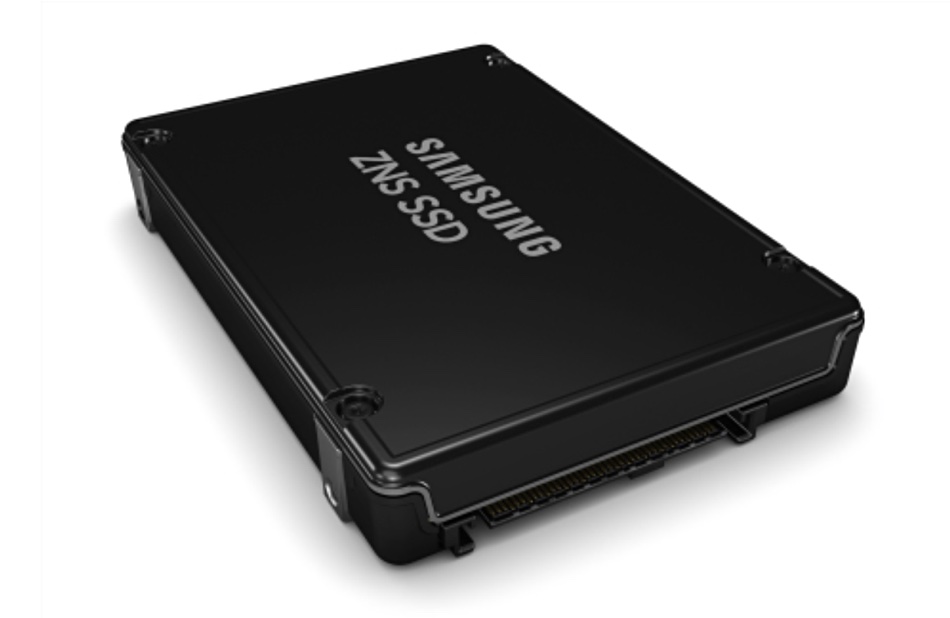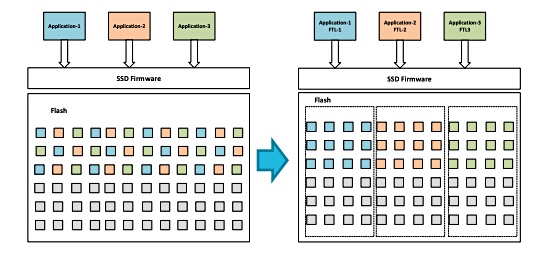Samsung has announced its first zoned namespace SSD, the PM1731a, claiming up to four times greater endurance but supplying no performance information at all.
Normally suppliers parade their SSDs with read and write IOPS and bandwidth numbers, but not this time. That’s because a zoned SSD has software-defined and host-managed sections for different kinds of IO, and performance is application workload-specific. It depends upon the host software and drive controller interaction and the intent, for Samsung, is to prolong a drive’s working life, its endurance.
Sangyeun Cho, Memory Software Development Team SVP at Samsung Electronics, said: “Samsung’s ZNS SSD reflects our commitment to introducing differentiated storage solutions that can substantially enhance the reliability and lifetime of server SSDs.”

Because SSDs inherently have their cells organised into a block structure, individual cell rewrites cause a block level erase and rewrite process. That means that writes randomly coming to an SSD are amplified, increased in number, as the SSD controller works to find space for incoming data against the limitations of the block structure. If the writes could be grouped together so that they could be written sequentially, then fewer block-level erases and rewrites would be needed.
Zoned namespace (ZNS) technology allows incoming data to be grouped based on its usage and access frequency, and stored sequentially in independent zones within an SSD. This can significantly reduce the number of write operations, lowering the drive’s write amplification factor (WAF) — the amount of actual writes performed by the drive compared to writes initially instructed by the host system. The closer the WAF is to one, the more efficient the SSD and the longer it will last.

Samsung claimed its PM1731a has a WAF close enough to 1 to provide up to four times more endurance than an equivalent capacity and NAND generation drive which does not use zoning. It does not provide a specific TB written (TBW) number though.
On that basis, a non-zoned 2TB Samsung SSD with a 1.2 TBW endurance rating would achieve 4.8 TBW rating if zoned.
The PM1731a is a 2.5-inch format drive using an NVMe interface running across PCIe gen 3 with dual ports. It uses Samsung’s 128-layer 6th generation 3D NAND (V-NAND) and comes in 22TB and 4TB capacities.
Samsung said it plans to mass-produce ZNS SSDs in thew second half of 2021. Cho said: “We plan to leverage quad-level cell (QLC – 4bits/cell) NAND technology in our next-generation ZNS drives to enable higher thresholds for storage performance and capacity in the enterprise systems of tomorrow.”
That implies the PM1731a is a TLC (3bits/cell) drive and we’ve asked Samsung to confirm that.
The target market for zoned SSDs consists of enterprise and hyperscale users needing to maximise drive efficiency and longevity.
Samsung said it has been actively engaging in several open-source projects to help expand the ZNS ecosystem. It will make its ZNS technology available to xNVMe, which provides software libraries and tools to improve the performance of NVMe devices. It is also participating in the Intel-created Storage Performance Development Kit (SPDK) community to enable SPDK users to implement ZNS more easily.
Samsung also says it will continue working with global enterprise storage companies to optimise its ZNS drives across various customer environments.
Western Digital launched its ZN540 zoned SSD in November 2020. It has also announced an alliance with Percona so that Percona’s MySQL Server software runs faster on the ZN540 than on non-zoned SSDs; delivering up to up to 3x more transactions per second. As far as we know, no other zoned SSDs have been launched.
June 02, 2021 at 09:43PM
https://ift.tt/3wUFFjk
Into the zone: Samsung launches its first zoned SSD at enterprises, hyperscalers – Blocks and Files - Blocks and Files
https://ift.tt/2O3clnm
/article-new/2021/06/iphone-13-duan-rui2.jpeg?lossy)
No comments:
Post a Comment